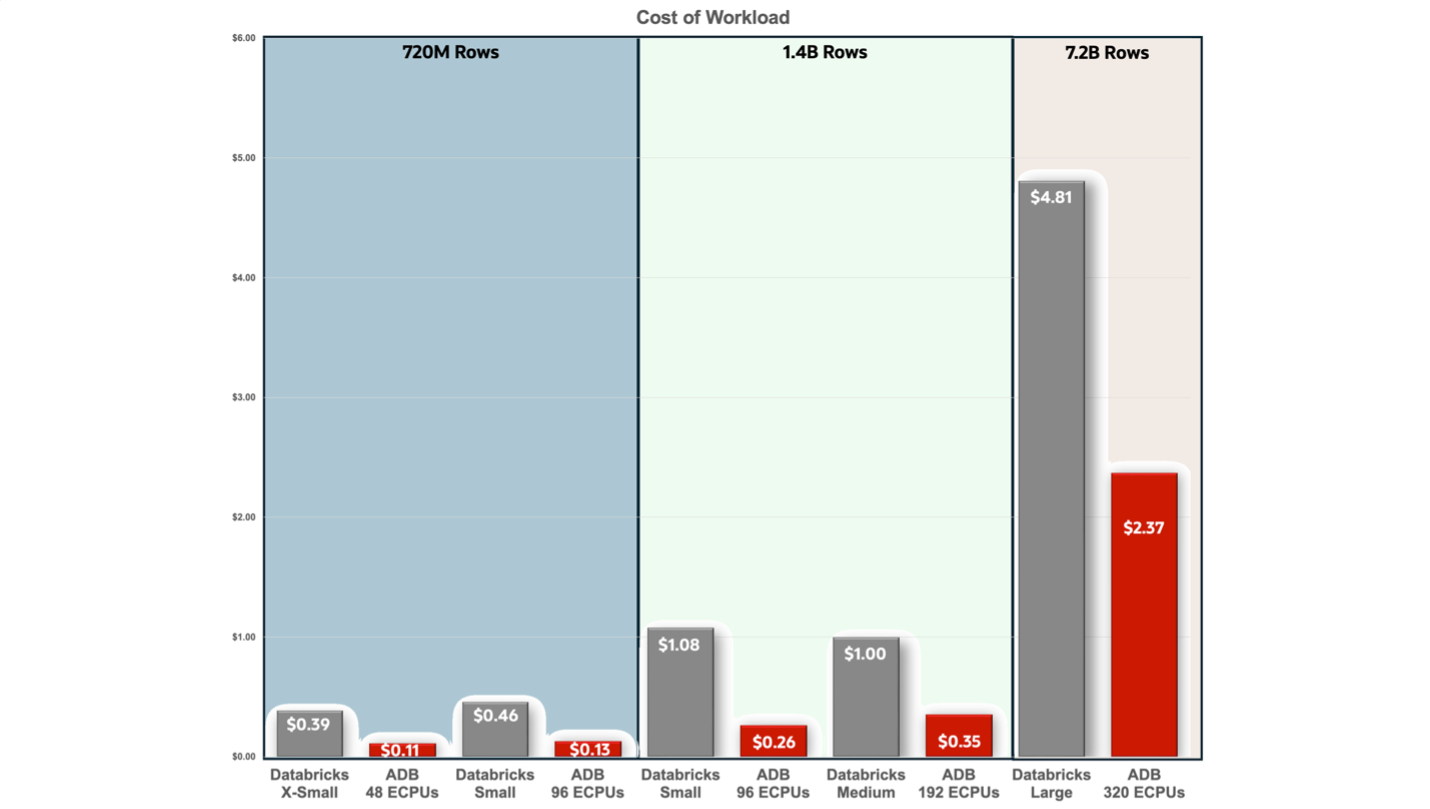For many customers who need to run analytic workloads there are two critical deciding factors when comparing different vendors. The first is flat-out performance figures. How fast can vendor X run my workload. The second factor aims to bring a level of financial integrity to the decision-making process by introducing price-performance to the equation. In most cases, the fastest analytic platform is not necessarily the most cost-effective – you don’t get Ferrari-levels of performance at typical Ford-level prices. Or can you?
There are a lot of performance comparisons available that cover Databricks vs. other traditional data warehouse vendors. Using the current release of Autonomous AI Database (Database 19c) we have used an existing set of independent benchmarks to examine the levels of both performance and price-performance provided by Autonomous AI Database against two specific vendors: Databricks and Snowflake. In our testing, using an independent coffee shop-based data set and workload (see links below), Autonomous AI Database is between 3x and 20x faster than Databricks. For price-performance, Autonomous AI Database was, overall, 2-4x more cost effective than Databricks.
Summary – Autonomous AI Database: Pay Less, Go Faster, Do More
Existing Oracle Database customers can get better performance and better price performance when moving analytic workloads to Autonomous AI Database. Why would you want to move a different vendor and significantly pay more for significantly slower performance?
Sample Workload – Coffee Shop
As the starting point for an “independent” comparison we have used a recent blog post onLinkedIn by Josue Bogran. Josue’s tests are based around his own dataset generator called Coffee Shop. The workload is based 17 analytic queries. Performance data was analyzed based on processing different volumes of rows from the main fact table.
The workload was based around 3 different sizes of data sets: 500 million rows, 1 billion rows, and 5 billion rows. All the original queries were run as-is! The results below are based on straight-out-the-box setup. We have not changed or attempted to optimize any of the original queries or any of the standard ADB configuration settings. You should be able to experience the same results by following the same steps presented in the original LinkedIn post.
Configurations
| Databricks SQL Data Warehouse Instances |
Autonomous AI Database |
| X-Small |
48 ECPUs |
| Small |
96 ECPUs |
| Medium |
192 ECPUs |
| Large |
320 ECPUs |
Performance Results
The data shown in the graphs represent the results of running a workload containing 17 analytical queries against a data set of 721 million rows and 1.4 billion rows.
As the size of the dataset increases there is a corresponding increase in the size of the compute resources. It should be noted that Databricks compute resources are based on fixed -t-shirt style shapes whereas ADB compute resources can be increased in steps of 1 ECPU which provides more control over workload costs and prevents over-provisioning of resources (both in terms of the basic size and the during auto-scaling operations).



The data shown in the table represents the breakdown of the workload containing 17 analytical queries against a data set of 721 million rows and 1.4 billion rows.

It’s clear from the graph that Autonomous AI Database is faster across all the different configurations and in some cases the price-performance gap is very significant. This is the result of specific opimtizations within Autonomous AI Database. For example, query 10 in the workload computes a rolling 90-day total of orders by city and date using a multi-step query wrapped within a WITH clause. Autonomous AI Database has specific optimizations to manage these types of complex queries – in-memory cursor duration temp table (creates temporary tables which takes intermediate query results and stores them in memory for the duration of the cursor. The result is increased performance and a reduction in I/O.
Overall, the faster performance of Autonomous AI Database is the result of the many decades of development of Oracle Database and the many decades of experience we have of running and optimizing mission-critical analytical workloads.
Notes On Price-Performance Data
Oracle Database always has been the most widely used enterprise-grade database for transactional, analytical, and translytical workloads. Plus, we are seeing many Oracle customers looking to move their on-premises workloads to the cloud. Therefore, we know many people will have existing Database licenses that can be transferred to the cloud. Therefore, the ADB price-performance figures are based on benefits of BYOL licensing.
Hope this was useful. Let me know if you have any questions.
